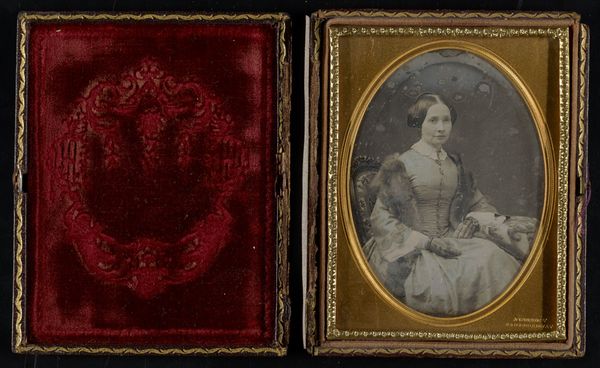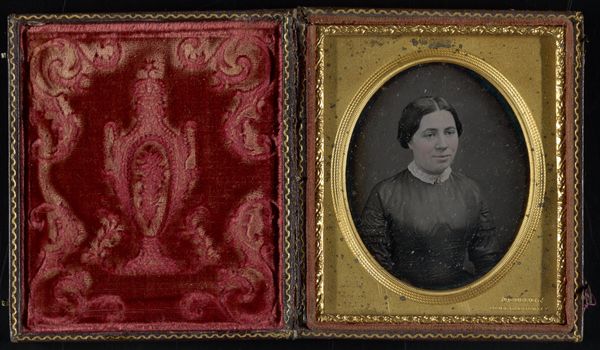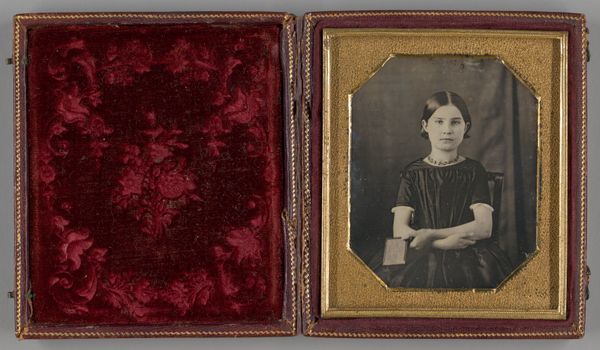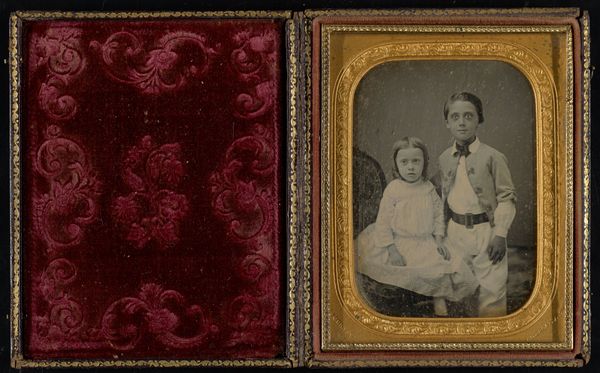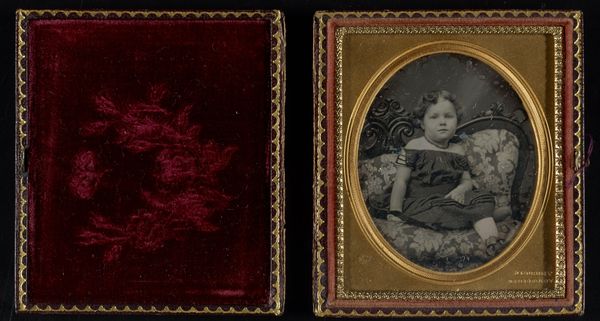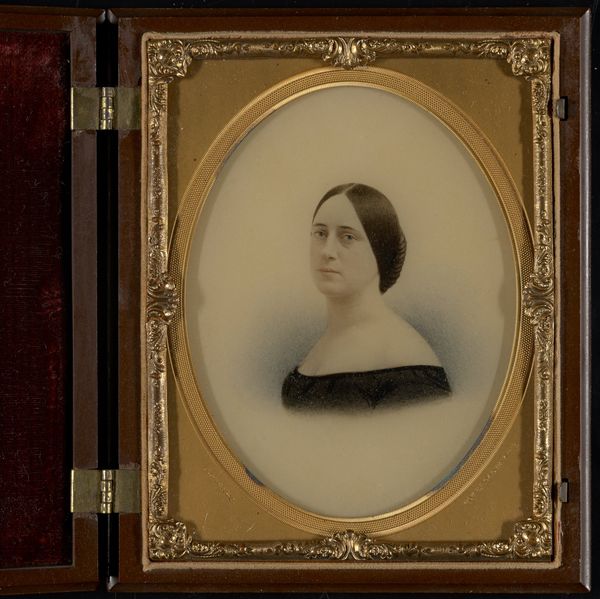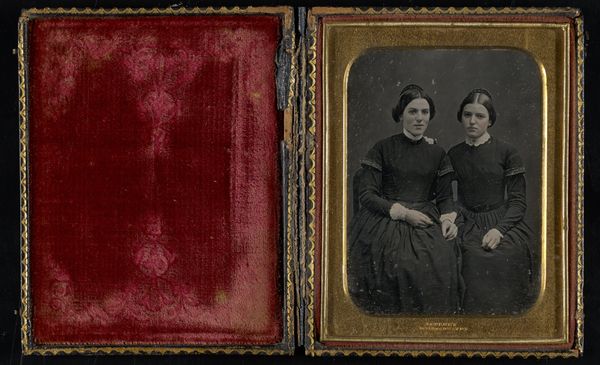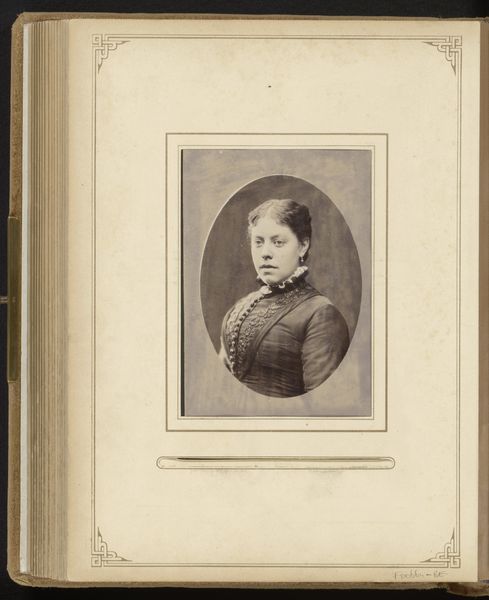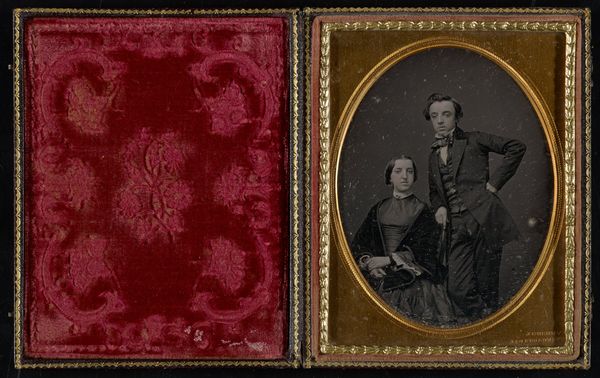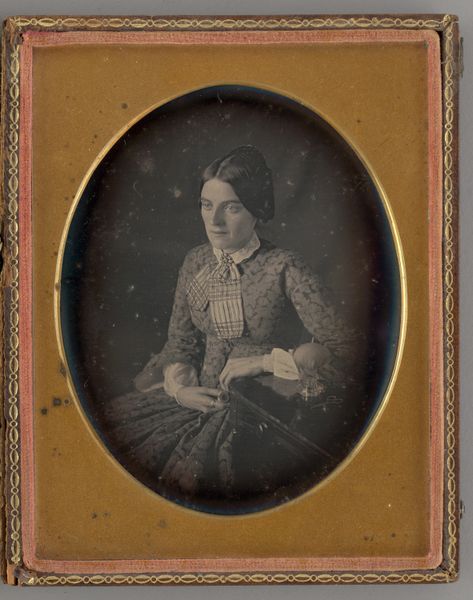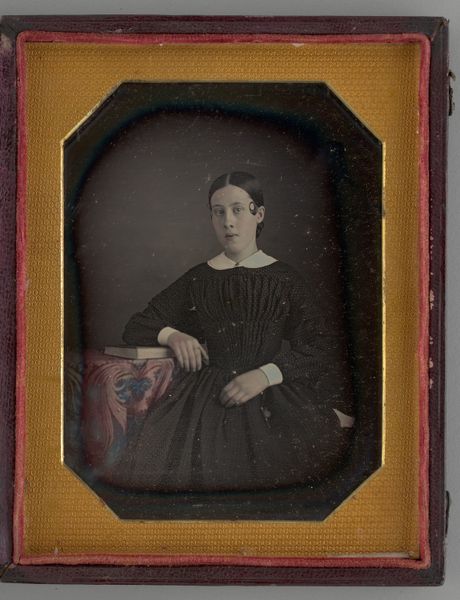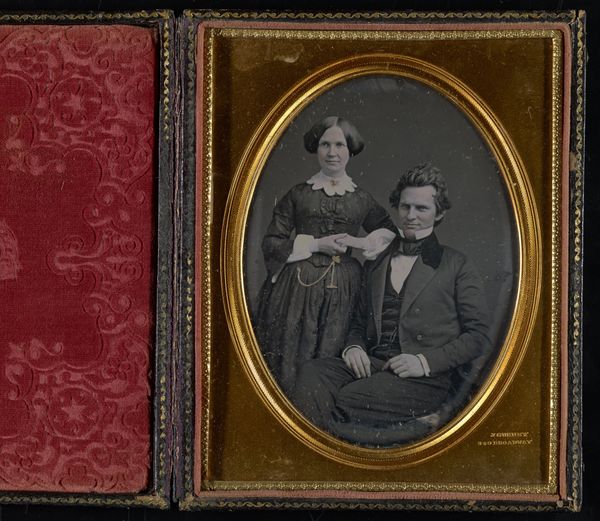![Untitled [portrait of a young girl seated in the 'Gurney chair'] by Jeremiah Gurney](/_next/image?url=https%3A%2F%2Fd2w8kbdekdi1gv.cloudfront.net%2FeyJidWNrZXQiOiAiYXJ0ZXJhLWltYWdlcy1idWNrZXQiLCAia2V5IjogImFydHdvcmtzLzVkMmE4ZjgxLTM4YTYtNGU4Zi04OTU5LTRiYTJlODlkNDAwOS81ZDJhOGY4MS0zOGE2LTRlOGYtODk1OS00YmEyZTg5ZDQwMDlfZnVsbC5qcGciLCAiZWRpdHMiOiB7InJlc2l6ZSI6IHsid2lkdGgiOiAxOTIwLCAiaGVpZ2h0IjogMTkyMCwgImZpdCI6ICJpbnNpZGUifX19&w=3840&q=75)
Untitled [portrait of a young girl seated in the 'Gurney chair'] 1852 - 1858
0:00
0:00
daguerreotype, photography, gelatin-silver-print
#
portrait
#
daguerreotype
#
photography
#
gelatin-silver-print
#
united-states
#
decorative-art
#
decorative art
Dimensions: 4 1/4 x 3 1/4 in. (10.8 x 8.26 cm) (image)4 11/16 x 3 5/8 x 3/4 in. (11.91 x 9.21 x 1.91 cm) (mount)
Copyright: Public Domain
Curator: My eye goes immediately to the young girl, solemn and seemingly ageless, preserved in this daguerreotype, likely crafted sometime between 1852 and 1858 by Jeremiah Gurney. It’s currently held in the collection of the Minneapolis Institute of Art. Editor: There’s a haunted, wistful quality to it, isn’t there? That deep burgundy case surrounding the photograph, the faded gold trim—it all feels like peering into a forgotten corner of someone’s memory, all bittersweet. Curator: That decorative art style framing it heightens its ritualistic nature. We see this young woman seated formally, gazing directly at the viewer, poised in the carefully chosen “Gurney chair”. The chair in itself signals status and the ambition of the portrait. It becomes more than a chair but a throne of sorts. Editor: Absolutely. There’s this intentional stiffness, this quiet intensity. Knowing these images often took time to capture, the young woman must have held her gaze and her pose perfectly. It’s so fascinating and quite different from our selfie culture today. We don't do so well in portraits when someone demands us to stay still! Curator: Indeed. Daguerreotypes captured the spirit as much as the physical form. And while these portraits presented an idealized version of the sitter, their formal nature provided lasting symbols for future generations. They communicated lineage and social status through carefully selected artifacts like the chair and her dress. Editor: So it served a functional purpose. I wonder about this young girl. She seems lost in her own thoughts but I wish I knew if she imagined how others would study her image so many years later. It would make for a beautiful film someday! Curator: That kind of storytelling is one of the beautiful potentials of portraiture. And now, looking at it from an iconographical view, this piece serves as an important lens through which to examine the early to mid-19th-century American family. Editor: It also shows how an item of material culture like an upholstered chair can symbolize broader concepts such as class and social status! Thank you, this piece has stayed with me. Curator: I'm glad to provide this viewpoint on American photographic traditions. This portrait acts as both a historical document and a touching echo of a moment captured across time.
Comments
No comments
Be the first to comment and join the conversation on the ultimate creative platform.
